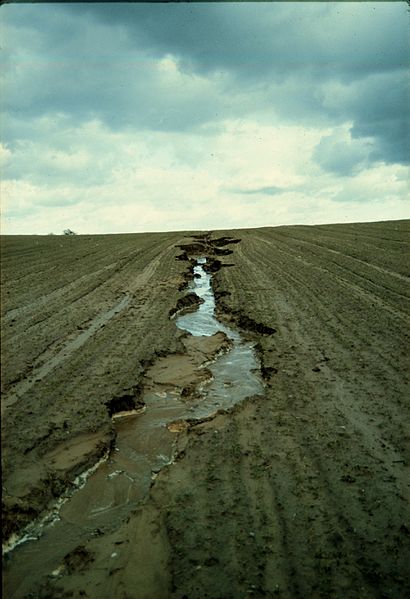Soil erosion is the denudation or wearing away of the upper layer of soil. It is a form of soil degradation. This natural process is caused by the dynamic activity of erosive agents, that is, water, ice (glaciers), snow, air (wind), plants, and animals. In accordance with these agents, erosion is sometimes divided into water erosion, glacial erosion, snow erosion, wind (aeolian) erosion, zoogenic erosion and anthropogenic erosion such as tillage erosion.
Soil erosion may be a slow process that continues relatively unnoticed, or it may occur at an alarming rate causing a serious loss of topsoil. The loss of soil from farmland may be reflected in reduced crop production potential, lower surface water quality and damaged drainage networks. Soil erosion could also cause sinkholes.
An actively eroding rill on an intensively-farmed field in eastern Germany
Soil erosion
Soil and water being splashed by the impact of a single raindrop
A spoil tip covered in rills and gullies due to erosion processes caused by rainfall: Rummu, Estonia
Topsoil is the upper layer of soil. It has the highest concentration of organic matter and microorganisms and is where most of the Earth's biological soil activity occurs.
Surface runoff of topsoil from a field in Iowa during a rain storm
Erosion barriers on disturbed slope, Marin County, California
Contour plowing in Pennsylvania in 1938. The rows formed slow surface water run-off during rainstorms to prevent soil erosion and allow the water time to infiltrate into the soil.







